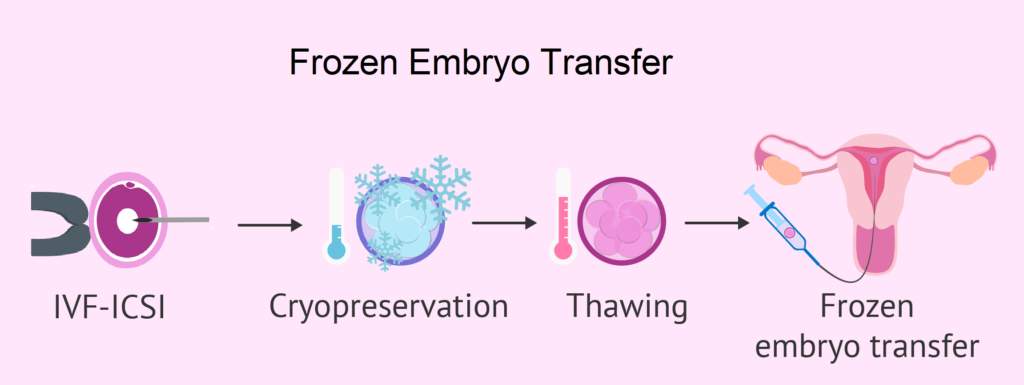Can frozen embryos be used in IVF?

- Frozen embryos can indeed be used in IVF, a common and effective practice in modern fertility treatments.
- The process of freezing embryos, known as cryopreservation, preserves embryos at extremely low temperatures for future use.
- Using frozen embryos offers flexibility, allowing couples to plan pregnancies at their convenience.
- Frozen embryos enable multiple IVF attempts without repeating ovarian stimulation and egg retrieval, saving time and reducing costs.
- Pre-implantation genetic testing (PGT) can be performed on frozen embryos to screen for genetic abnormalities before transfer.
- Elective Single Embryo Transfer (eSET) with frozen embryos can reduce the risk of multiple pregnancies by allowing the transfer of a single embryo.
- Advances in cryopreservation have led to frozen embryo transfer success rates comparable to or even higher than fresh transfers.
- Some embryos may not survive the freezing and thawing process, though modern techniques have high survival rates.
- Storage costs for frozen embryos can add to the overall expense of IVF treatment.
- Couples must consider the emotional and ethical implications of having remaining frozen embryos, especially after completing their family.
- Using frozen embryos enhances flexibility, cost-effectiveness, and success rates in IVF treatments.
- As technology advances, the use of frozen embryos in IVF is expected to become more prevalent and successful.
Created by: ISHWA IVF CENTRE
Recommended




.png)

Comments